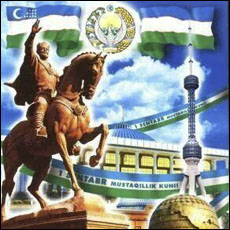
Vatan Hakida Shejrlar
I started with, which are very low power and super easy to use, but they only provide at most 512 kBytes of data storage. Spi flash tiny tools download full.
Islamic Calendar stamp issued at King Khalid airport (10 Rajab 1428 / 24 July 2007) The Islamic, Muslim, or Hijri calendar (: التقويم الهجري at-taqwīm al-hijrī) is a consisting of 12 in a year of 354 or 355 days. It is used to determine the proper days of and rituals, such as the and the proper time for the. The of almost all countries where the religion is predominantly Muslim is the. Notable exceptions to this rule are Iran and Afghanistan, which use the. Rents, wages and similar regular commitments are generally paid by the civil calendar.
[ ] The Islamic calendar employs the whose was established as the of 622 /. During that year, and his followers migrated from to Yathrib (now ) and established the first Muslim community ( ), an event commemorated as the. In the West, dates in this era are usually denoted AH (: Anno Hegirae, 'in the year of the Hijra') in parallel with the (AD), (CE) and (AM).
Ozbekistonim Vatan Haqida Sherlar O Antiqa Uz kurs ishi - library.ziyonet - 4 1b. 2-sinf o'qish darslarining maqsadi va vazifalari. O'qish malakalari va. Vatan Yurt Haqida Sherlar Forum Ziyouz Com practical apartment management kelley edward,practical astronomy with your calculator peter duffett smith.
In Muslim countries, it is also sometimes denoted as H from its Arabic form ( سَنة هِجْريّة, abbreviated ). In English, years prior to the Hijra are reckoned as BH ('Before the Hijra'). The current Islamic year is 1440 AH. In the Gregorian calendar, 1440 AH runs from approximately 11 September 2018 to 30 August 2019. Main article: For central Arabia, especially, there is a lack of epigraphical evidence but details are found in the writings of Muslim authors of the era. Inscriptions of the ancient calendars reveal the use of a number of local calendars. At least some of these South Arabian calendars followed the.
Both and suggest that the ancient Arabs used the same month names as the Muslims, though they also record other month names used by the pre-Islamic Arabs. The Islamic tradition is unanimous in stating that Arabs of,, and distinguished between two types of months, permitted ( ḥalāl) and forbidden ( ḥarām) months. [ ] The forbidden months were four months during which fighting is forbidden, listed as Rajab and the three months around the season, Dhu al-Qa‘dah, Dhu al-Hijjah, and Muharram. 
[ ] However, Muslim historians do not link these months to a particular season. The links the four forbidden months with Nasī’, a word that literally means 'postponement'. According to Muslim tradition, the decision of postponement was administered by the tribe of, by a man known as the al-Qalammas of Kinanah and his descendants (pl. Different interpretations of the concept of Nasī’ have been proposed. Some scholars, both Muslim and Western, maintain that the calendar used in central Arabia was a purely lunar calendar similar to the modern Islamic calendar. According to this view, Nasī’ is related to the pre-Islamic practices of the Meccan Arabs, where they would alter the distribution of the forbidden months within a given year without implying a calendar manipulation. This interpretation is supported by Arab historians and lexicographers, like,, and the corpus of.
This is corroborated by an early inscription, where a religious ritual was 'postponed' ( ns'’w) due to war. According to the context of this inscription, the verb ns'’ has nothing to do with intercalation, but only with moving religious events within the calendar itself. The similarity between the religious concept of this ancient inscription and the Qur'an suggests that non-calendaring postponement is also the Qur'anic meaning of Nasī’. The concludes 'The Arabic system of [Nasī’] can only have been intended to move the Hajj and the fairs associated with it in the vicinity of Mecca to a suitable season of the year. It was not intended to establish a fixed calendar to be generally observed.'
The term 'fixed calendar' is generally understood to refer to the non-intercalated calendar. Others concur that it was originally a lunar calendar, but suggest that about 200 years before the it was transformed into a containing an added from time to time to keep the pilgrimage within the season of the year when merchandise was most abundant. This interpretation was first proposed by the medieval Muslim astrologer and astronomer, and later by,, and some western scholars. This interpretation considers Nasī’ to be a synonym to the Arabic word for 'intercalation' ( kabīsa). The Arabs, according to one explanation mentioned by Abu Ma'shar, learned of this type of intercalation from the Jews. The Jewish Nasi was the official who decided when to intercalate the Jewish calendar. Some sources say that the Arabs followed the Jewish practice and intercalated seven months over nineteen years, or else that they intercalated nine months over 24 years; there is, however, no consensus among scholars on this issue.